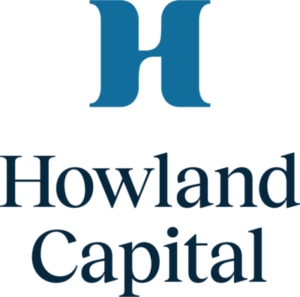The fourth quarter is likely to exceed 7% once the official data is finalized. If this expectation is correct, 2021 would be the most robust year of economic growth since 1984. The overall level of output now exceeds levels achieved in 2019. So there is good news to celebrate, and real progress in the ongoing recovery. Looking ahead, we expect growth in 2022 to slow but not stall. The path forward will be impacted by a number of key factors. Here are a few that we are watching closely:
The Pandemic.
The Omicron variant is likely to dampen economic activity in the next few months. Worker output may be
constrained, as high levels of absenteeism persist and staffing shortages only seem to worsen. Many businesses have already curtailed plans to bring employees back to offices. Continuing a now familiar pattern, we expect conditions to improve as spring arrives. The biggest risk remains the uncertainty surrounding how the virus mutates, and the effectiveness of vaccines and testing to contain future spread. Along with the risks are the changes to human behavior that accompany them. More restricted travel, fewer trips to restaurants, smaller gatherings of families and friends all translate to lower economic demand until conditions improve.
Inflation.
Inflation is something that all of us feel. Most of us are talking about it or reading about it daily in the news. Social Security recipients will see a 5.9% cost-of-living adjustment in their checks starting in January, the highest since 1983. It seems just about everything costs more or is harder to come by. It is no longer paper towels and toilet paper that are hard to come by; home builders, auto manufacturers, appliance retailers are just a few of the industries struggling to meet demand that far exceeds supply. This imbalance has resulted in large year-over-year increases in prices. The headline Consumer Price Index (CPI) increased 6.9% in November, after a similar jump in October. Energy prices increased more than 30% in each of those months, driven by higher oil prices and rising demand. Core CPI, which excludes food and energy components, increased 5.0% in November. Until recently, Fed Chair Jerome Powell insisted inflation was “transitory,” resulting from supply and demand imbalances and exacerbated by backlogs in shipping and transportation. Our view is that while some elements are, indeed, transitory there are some structural components to inflation at play too. Chair Powell has acknowledged that conditions will likely warrant a rise in the policy interest rate (which the Fed sets) later this year. We expect three, possibly four, interest rate increases by the Fed at a measured pace, bringing short-term interest rates within a range of 1.0%-1.25% versus 0% today. These rate increases will likely dampen overall inflation, yet hopefully still keep monetary policy accommodative enough to foster growth in the economy. With peak holiday season demand receding, we also expect shipping and transportation bottlenecks to improve. We expect inflation to remain in focus, but expect it is likely to moderate in the second half of the year from current elevated levels.
The Labor Market.
The job market is extremely tight. Like the inflation story, we see it in daily life. The coffee shops open late and close early. The customer service lines are at “higher than normal call volume.” We scan and bag our own items at checkout. Again, the data confirms what we already know. More than 11 million jobs are unfilled and 4.5 million have quit their jobs. In what is being dubbed the “Great Resignation,” employees are leaving their jobs at the highest rate in decades. Those who are still on the job are asking for more flexibility, greater benefits, and higher pay. In economic terms, that translates to higher wage and benefit costs for employers. Though the economy is already close to “full employment,” we expect the unemployment rate to fall further in 2022. That means wage growth will remain strong. Consumers and corporations will share the costs, depending on how much of the cost “passes through” in price increases. In the meantime, we all need to get used to waiting a bit longer for just about everything.
Fiscal Policy.
The Biden Administration was unable to forge a compromise to pass the Build Back Better (BBB) bill before the end of last year. While negotiations continue, the most immediate effect will be an end to the cash advance child tax credit for roughly 35 million families. According to the IRS, these payments totaled a whopping $15 billion per month. Much of it was spent by lower income earners on food and basic household items. It is possible that some or all of these benefits might resume later this year, but we won’t know the outcome for months as debates continues. Even if the BBB bill passes, the fiscal benefits will be phased in slowly over ten years, or more. According to the CBO, the Federal Budget Deficit will drop from $2.8 trillion, or 4.7% of GDP to $1.2 trillion. That means the amount of fiscal stimulus will fall by more than half, another drag on growth.
In aggregate, we see an economy that remains healthy enough to grow at a moderate rate despite various challenges and a good deal of uncertainty.

